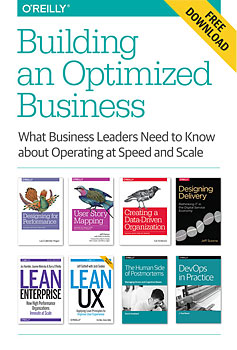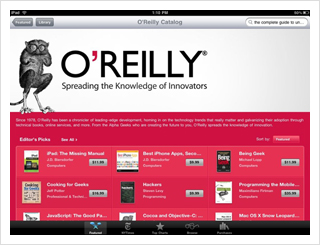"company culture" entries

Bob Baxley on Apple and Pinterest, company cultures, and the designer shortage
The O’Reilly Design Podcast: Culture, competition, and design staffing.
Subscribe to the O’Reilly Design Podcast, our podcast exploring how experience design—and experience designers—are shaping business, the Internet of Things, and other domains.
In this week’s Design Podcast episode, I sit down with Bob Baxley, who is keynoting at OReilly’s inaugural Design Conference. He compares cultures at Apple and Pinterest, talks about competition in the design playing field, and addresses the designer shortage.
Here are a few highlights from our conversation:
My observation is that although Apple really dominates the product culture of technology, certainly in Silicon Valley potentially globally, it’s really the Google culture that dominates how companies work.
By that I mean, a culture of engineering-centric, ship fast, let’s fix stuff, intense incrementalism based on metrics and experimentation, which is very different from how Apple works, at least in the time I was there, where it was much more deterministic. I think the difference maybe has to do with the business models, where Apple is creating a product that they’re going to sell and somebody has to pay money for.
…
Pinterest, I think, is trying to sit in between those two right now. The foundational DNA of Pinterest is definitely Google, where Ben Silverman, the founder and CEO, was before he started Pinterest, and then Evan Sharp, who’s the creative co-founder. Evan was at Facebook, and my experience of Pinterest is that it’s really in between a Google and Facebook culture—a lot of emphasis on engineering, but still a lot of input from product management and obviously design; having a design co-founder influences the company a lot.

A “have-coffee” culture
Tending the DevOps victory garden.

Download Building an Optimized Business.
Download a free copy of Building an Optimized Business, a curated collection of chapters from the O’Reilly Web Operations and Performance library. This post is an excerpt by J. Paul Reed from DevOps in Practice, one of the selections included in the curated collection.
Any discussion surrounding DevOps and its methodologies quickly comes to the often delicate issue of organizational dynamics and culture, at least if it’s an accurate treatment of the topic. There is often a tendency to downplay or gloss over these issues precisely because culture is thought of as a “squishy” thing, difficult to shape and change, and in some cases, to even address directly. But it doesn’t need to be this way.
Sam Hogenson, Vice President of Technology at Nordstrom, works hard to make sure it’s exactly the opposite: “At Nordstrom, we value these different experiences and we value the core of how you work, how you build relationships much more than whether or not you have subject matter expertise. It’s a successful formula.” Another part of that formula, Hogenson notes, is the ethos of the organization: “It’s a very empowered workforce, a very decentralized organization; I always remember the Nordstroms telling us ‘Treat this as if it were your name over the door: how would you run your business and take care of your customers?'” [Nordstrom infrastructure engineer Doug] Ireton described it as a “have-coffee culture: if you need to talk to someone, you go have coffee with them.”

How I failed
Six lessons learned.
This post originally appeared on LinkedIn.
 When you start out as an entrepreneur, it’s just you and your idea, or you and your co-founder’s and your idea. Then you add customers, and they shape and mold you and that idea until you achieve the fabled “product-market fit.” If you are lucky and diligent, you achieve that fit more than once, reinventing yourself with multiple products and multiple customer segments.
When you start out as an entrepreneur, it’s just you and your idea, or you and your co-founder’s and your idea. Then you add customers, and they shape and mold you and that idea until you achieve the fabled “product-market fit.” If you are lucky and diligent, you achieve that fit more than once, reinventing yourself with multiple products and multiple customer segments.
But if you are to succeed in building an enduring company, it has to be about far more than that: it has to be about the team and the institution you create together. As a management team, you aren’t just working for the company; you have to work on the company, shaping it, tuning it, setting the rules that it will live by. And it’s way too easy to give that latter work short shrift.
At O’Reilly Media, we’ve built a successful business and have had a big impact on our industry, but looking back at our history, it’s also clear to me how often we’ve failed, and what some of the things are that kept me, my employees, and our company from achieving our full potential. Some of these were failures of vision, some of them were failures of nerve, but most of them were failures in building and cultivating the company culture. Read more…
